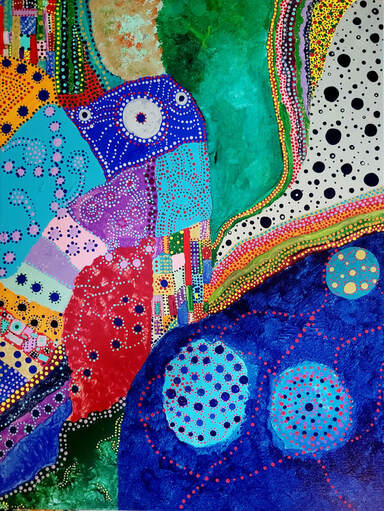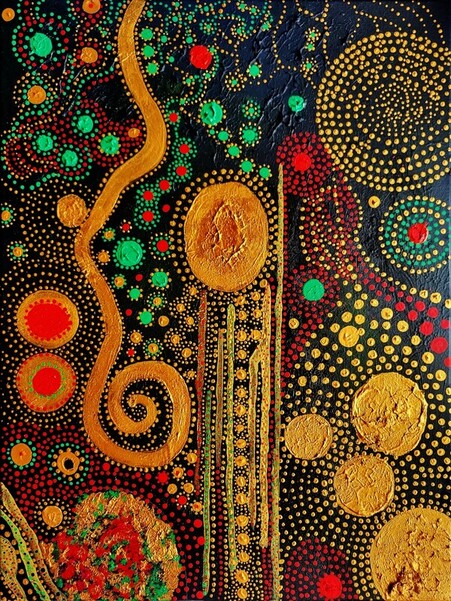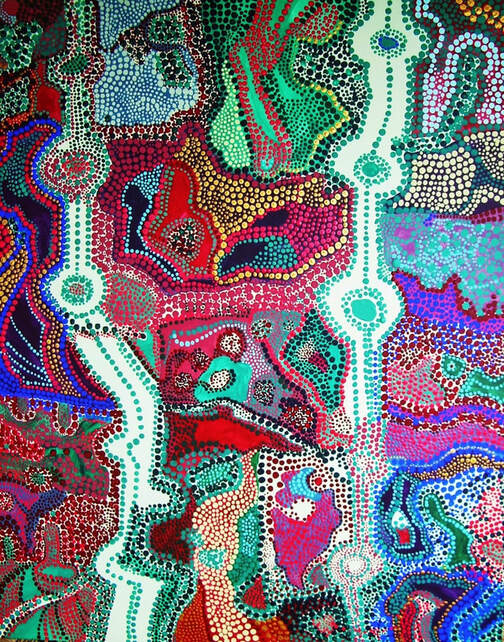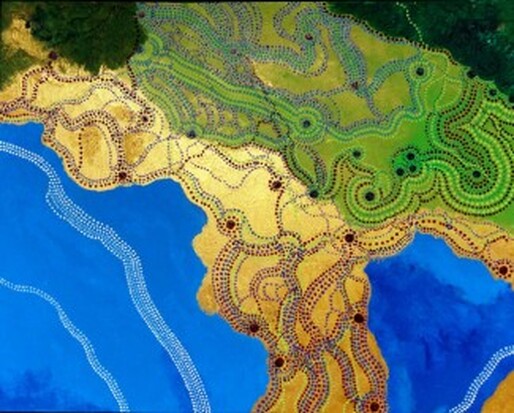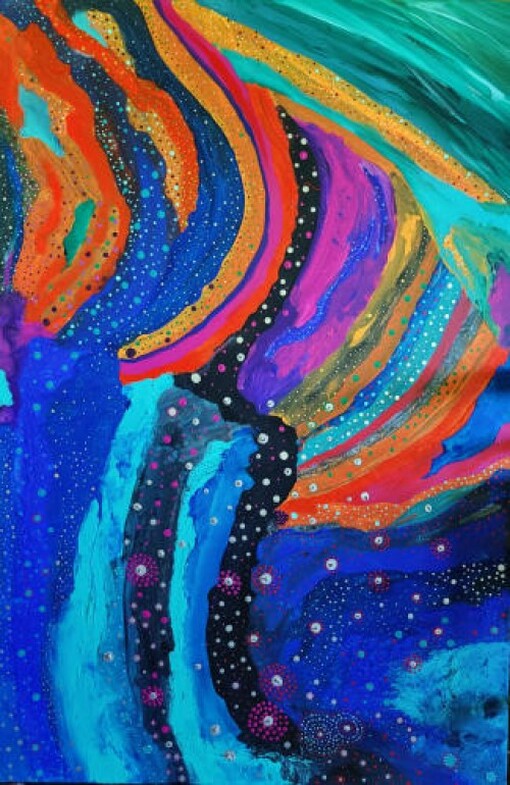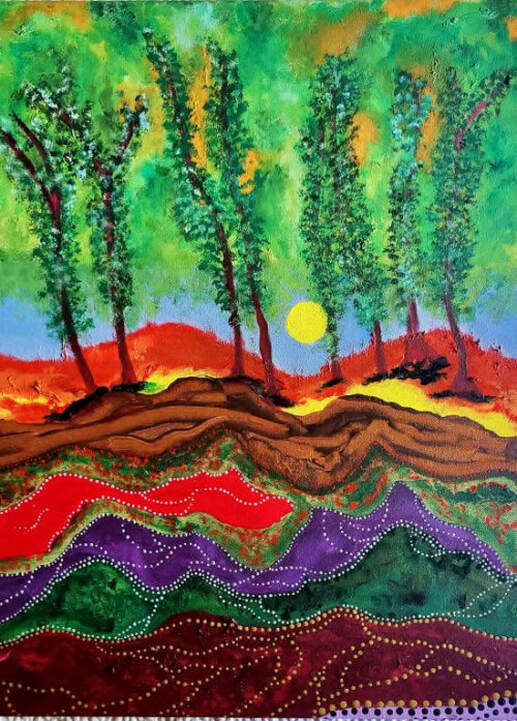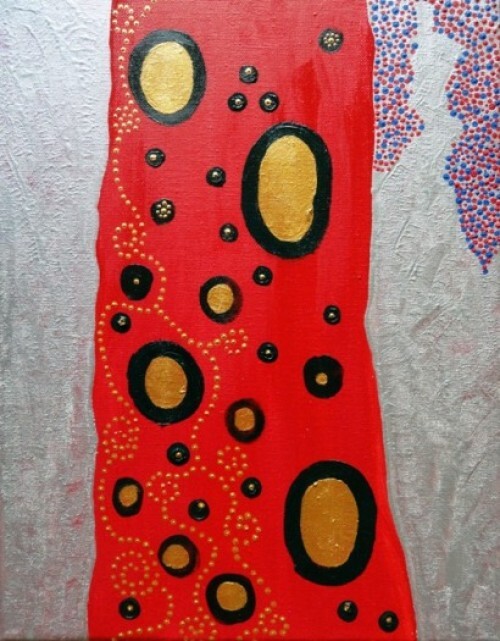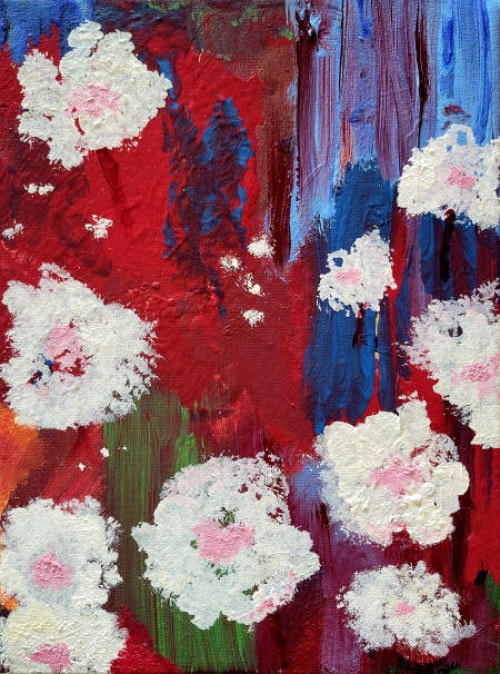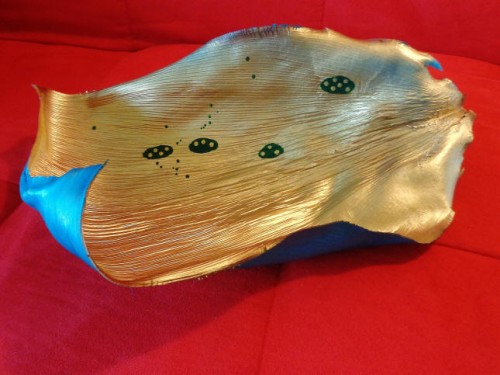Frank Oliva lives and works in Kailua, Hawai'i on the Island of O'ahu.
His paintings reflect his island experiences and environment as well as his color journeys and travels during years of artistic discovery.
Aboriginal Journey III
Acrylic On Canvas
24' x 18'
$500
Acrylic On Canvas
24' x 18'
$500
Oculus III
Acrylic On Canvas
48' x 36
$2200
Acrylic On Canvas
48' x 36
$2200
Aboriginal Paths VI
Acrylic on Canvas
12 x 12
$250
Acrylic on Canvas
12 x 12
$250
Golden Peace
Acrylic on Canvas
24 x 18
$500
Acrylic on Canvas
24 x 18
$500
Aboriginal Tracks V
Acrylic On Canvas
40' x 27'
Framed
$900
Acrylic On Canvas
40' x 27'
Framed
$900
TNYO: Where are you originally from Frank?
Frank Oliva: New York City
TNYO: Can you share your experiences in Australia and what the Aboriginal culture is all about?
Frank Oliva: Our first international trip after retirement in 1970 was to Australia traveling from Sydney and Canberra thru coastal towns ending in Melbourne. Altho we were members of many NYC museums including the Metropolitan Museum which has an Oceanic Wing we had never seen aboriginal art. Aboriginal art only emerged in the 1970s.
Instead of making images for their own use in ceremonies by depicting family history and culture by drawing on the ground or painting on their bodies, they decided to portray these images on walls, bark, buildings and canvas to inform outsiders of the complexities of their origins
TNYO: This experience has obviously affected your work and your life. What is The Aboriginal Dot Style and why have you chosen to predominantly work in this style?
Frank Oliva: I was captivated by the aboriginal trails of color across paper, bark and fabric. I began making my own color journey across canvas. My tracks have a beginning and an end. I hope the viewer enjoys the visual adventure.
TNYO: Your color selections compositions seem to flow effortlessly, is there a process that goes into the work or is it just a karmic rhythm?
Frank Oliva: There is always a mental plan but color is the key to expressing and charting the journey from eye to intellect. When painting in the aboriginal style I often use thousands of color dots in flowing lines and images.
TNYO: What is your major inspiration when creating art Frank?
Frank Oliva: My wife introduced me to the world of art. There is little room for humanities in an engineering curriculum but my wife as an art history major opened my world to the joys of art. First I immersed myself in learning about individual art schools then individual artists. I often draw inspiration from artists like Klimt, Rothko, Frankenthaler and Picasso.
TNYO: Have you been making art since childhood?
Frank Oliva: I would draw when I was in primary school. Nothing worth saving or even sticking on the fridge but I enjoyed drawing mountains and waterscapes. For a formal introduction to art I remember an art class in primary school where small pictures were distributed of famous works which the teacher would discuss. I did enjoy learning of the different artists and still recall looking at art from da Vinci, Michelangelo, Vermeer and Homer. My continued drawing and learning ended with the rigors of high school and earning a degree in Civil Engineering.
TNYO: You are a resident of Hawaii. Can you tell us about your life there - your family life - the atmosphere and how this affects your art?
Frank Oliva: My 40 year career as a civil engineer with the US Army Corps of Engineers enabled my family and I to see the world. Altho a civilian and not directed to move to an assignment as required by the military, the Corps had projects from coast to coast and globally from Europe to the Far East offering numerous opportunities to apply for positions. I was fortunate to be chosen for positions in Italy and lastly in Honolulu. My overseas projects were in Germany, Greece, Turkey, Italy, Saudi Arabia, Japan and Korea. Nationally my projects were from coast to coast plus Alaska and the Hawaiian Islands. These travels gave me a personal worldwide perspective on many issues but also an opportunity to visit museums, churches, castles and galleries from major cities to minor towns.
My last position brought me to Honolulu in 2000 where I stayed until retiring in 2007 and where we intend to remain. Growing up in NYC the thought of visiting much less living in a tropical paradise never occured to me. Our family is small with 3 children, their spouses and 3 grandsons but we are very close. 4 live a mile away from us the remaining five live in the San Francisco Bay Area thus a five hour flight away. We communicate almost daily. The weather here may seem boring if merely looking at temperatures but each day varies with changing clouds and trade winds. Every view offers wonderful vistas to paint. Living here enables me to paint year round in my outdoor studio aka lanai.
TNYO: If you were not an artist what would you be ?
Frank Oliva: A boring retired engineer. I am so lucky to have discovered the world art.
TNYO: Do you listen to music when you work and if so can you choose a song for our audience to listen to?
Frank Oliva: I always listened to music when I was younger even when studying difficult subjects.
Altho I still enjoy music I now find it distracting if I am painting.
Frank Oliva: New York City
TNYO: Can you share your experiences in Australia and what the Aboriginal culture is all about?
Frank Oliva: Our first international trip after retirement in 1970 was to Australia traveling from Sydney and Canberra thru coastal towns ending in Melbourne. Altho we were members of many NYC museums including the Metropolitan Museum which has an Oceanic Wing we had never seen aboriginal art. Aboriginal art only emerged in the 1970s.
Instead of making images for their own use in ceremonies by depicting family history and culture by drawing on the ground or painting on their bodies, they decided to portray these images on walls, bark, buildings and canvas to inform outsiders of the complexities of their origins
TNYO: This experience has obviously affected your work and your life. What is The Aboriginal Dot Style and why have you chosen to predominantly work in this style?
Frank Oliva: I was captivated by the aboriginal trails of color across paper, bark and fabric. I began making my own color journey across canvas. My tracks have a beginning and an end. I hope the viewer enjoys the visual adventure.
TNYO: Your color selections compositions seem to flow effortlessly, is there a process that goes into the work or is it just a karmic rhythm?
Frank Oliva: There is always a mental plan but color is the key to expressing and charting the journey from eye to intellect. When painting in the aboriginal style I often use thousands of color dots in flowing lines and images.
TNYO: What is your major inspiration when creating art Frank?
Frank Oliva: My wife introduced me to the world of art. There is little room for humanities in an engineering curriculum but my wife as an art history major opened my world to the joys of art. First I immersed myself in learning about individual art schools then individual artists. I often draw inspiration from artists like Klimt, Rothko, Frankenthaler and Picasso.
TNYO: Have you been making art since childhood?
Frank Oliva: I would draw when I was in primary school. Nothing worth saving or even sticking on the fridge but I enjoyed drawing mountains and waterscapes. For a formal introduction to art I remember an art class in primary school where small pictures were distributed of famous works which the teacher would discuss. I did enjoy learning of the different artists and still recall looking at art from da Vinci, Michelangelo, Vermeer and Homer. My continued drawing and learning ended with the rigors of high school and earning a degree in Civil Engineering.
TNYO: You are a resident of Hawaii. Can you tell us about your life there - your family life - the atmosphere and how this affects your art?
Frank Oliva: My 40 year career as a civil engineer with the US Army Corps of Engineers enabled my family and I to see the world. Altho a civilian and not directed to move to an assignment as required by the military, the Corps had projects from coast to coast and globally from Europe to the Far East offering numerous opportunities to apply for positions. I was fortunate to be chosen for positions in Italy and lastly in Honolulu. My overseas projects were in Germany, Greece, Turkey, Italy, Saudi Arabia, Japan and Korea. Nationally my projects were from coast to coast plus Alaska and the Hawaiian Islands. These travels gave me a personal worldwide perspective on many issues but also an opportunity to visit museums, churches, castles and galleries from major cities to minor towns.
My last position brought me to Honolulu in 2000 where I stayed until retiring in 2007 and where we intend to remain. Growing up in NYC the thought of visiting much less living in a tropical paradise never occured to me. Our family is small with 3 children, their spouses and 3 grandsons but we are very close. 4 live a mile away from us the remaining five live in the San Francisco Bay Area thus a five hour flight away. We communicate almost daily. The weather here may seem boring if merely looking at temperatures but each day varies with changing clouds and trade winds. Every view offers wonderful vistas to paint. Living here enables me to paint year round in my outdoor studio aka lanai.
TNYO: If you were not an artist what would you be ?
Frank Oliva: A boring retired engineer. I am so lucky to have discovered the world art.
TNYO: Do you listen to music when you work and if so can you choose a song for our audience to listen to?
Frank Oliva: I always listened to music when I was younger even when studying difficult subjects.
Altho I still enjoy music I now find it distracting if I am painting.
Aboriginal Paths
Acrylic On Canvas
30' x 24'
$900
Acrylic On Canvas
30' x 24'
$900
Endless Summer
Acrylic On Canvas Framed
13' x 16'
$400
Acrylic On Canvas Framed
13' x 16'
$400
Celestial
Acrylic on Canvas 24 x 30
$500
Acrylic on Canvas 24 x 30
$500
Chasm
Acrylic on Canvas 18 x 24
$350
Acrylic on Canvas 18 x 24
$350
Cosmos III
Acrylic on Canvas 45 x 30
$2000
Acrylic on Canvas 45 x 30
$2000
Cosmos IV
Acrylic on Canvas 16 x 16
$300
Acrylic on Canvas 16 x 16
$300
Enchanted Forest
Acrylic on Canvas 24 x 18
$350
Acrylic on Canvas 24 x 18
$350
Aboriginal Bark
Acrylic on Canvas 14 x 11
$200
Acrylic on Canvas 14 x 11
$200
Wall Flowers
Acrylic on Canvas 11 x 9
$200
Acrylic on Canvas 11 x 9
$200
Frond VIII
Palm Frond
27 inches long
Palm Frond
27 inches long
Frond VI
Palm Frond
17 inches long
Palm Frond
17 inches long

